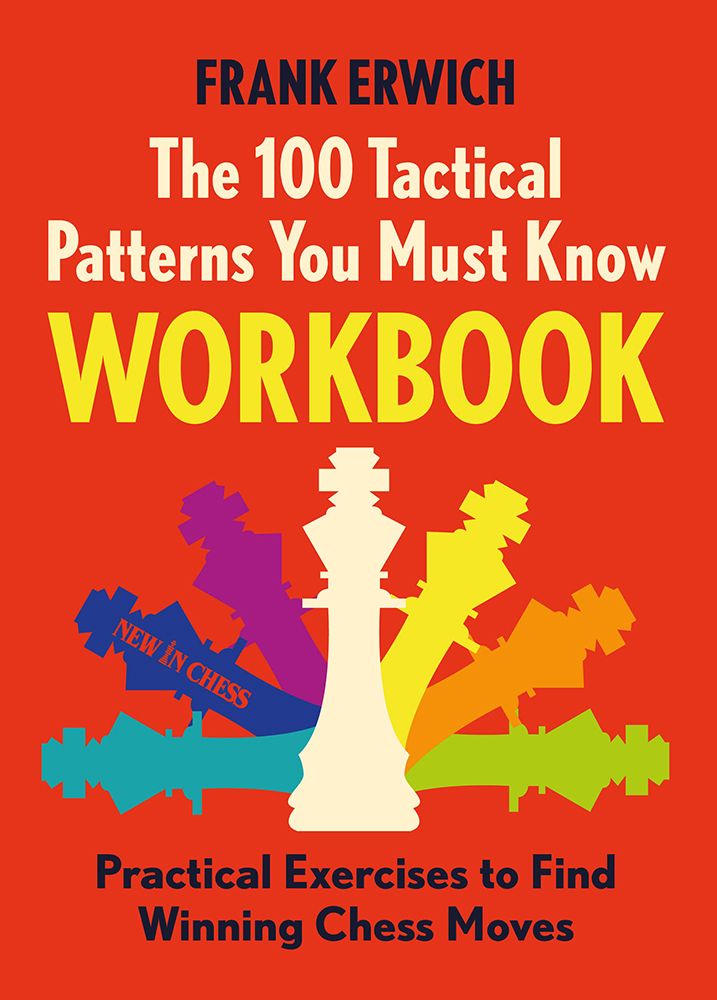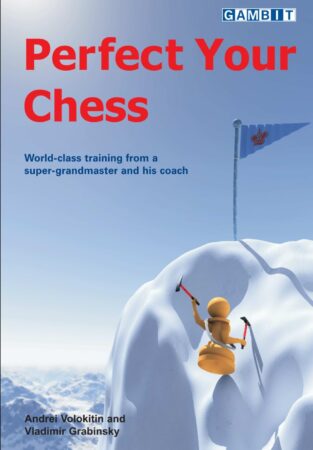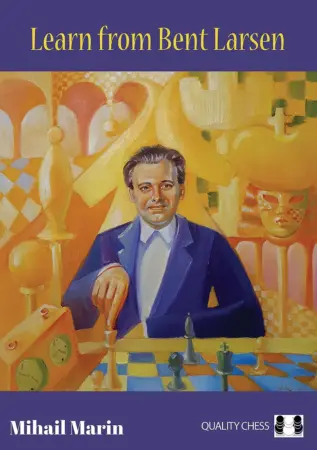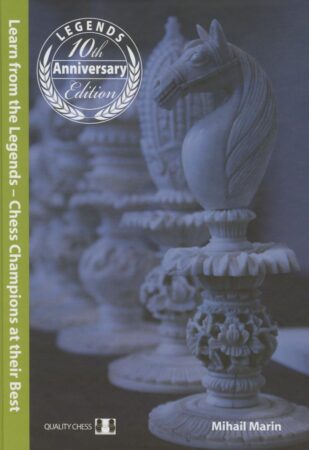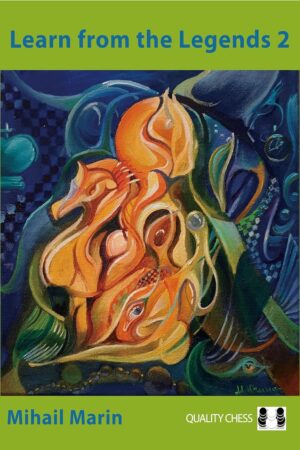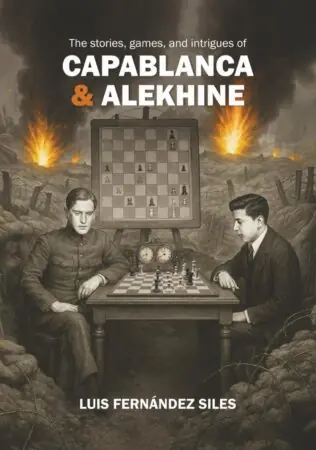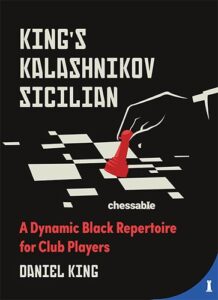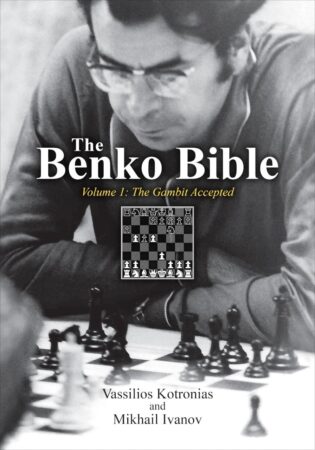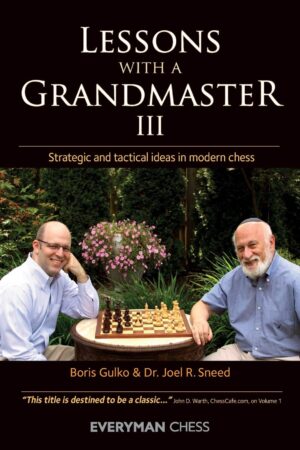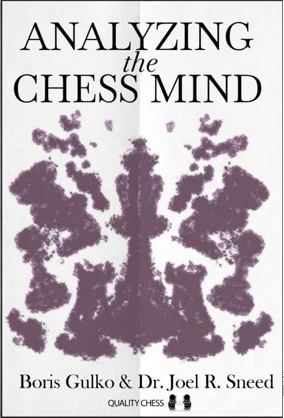Introduction
Frank Erwich has written two books; The 100 Tactical Patterns You Must Know and the workbook of the same name. They cover the same topic, and could have easily been a single book. Personally, I would greatly prefer that. I think each book is far less valuable separately, as the workbook is hard to solve without the theoretical introduction, and the first volume is just that, theoretical, and it doesn’t provide problems for the reader to solve. That being said, the workbook does contain brief introductions to each pattern, making it almost viable as a stand-alone read.
“Experienced chess trainer Frank Erwich has not only identified the 100 most important tactical patterns, he has also collected hundreds of exercises for you to train these patterns. Solving these puzzles will drive home the key ideas, refresh your knowledge and improve your technique.“, New in Chess
Structure of the book
The book is divided into 13 chapters, perfectly corresponding those in the 100 Tactical Patterns You Must Know. Each chapter is devoted to a group of patterns, mostly logically grouped into similar themes, or simply subsections of the same theme. Every pattern is given a brief explanation, which is followed by exercises. Detailed explanations and examples from real games for each pattern are in the other book, which, again, I think makes very little sense. They should have just added the exercises to the end of each chapter of the theoretical volume. Each chapter of the workbook is accompanied with over 30 problems, 516 all together. One thing I really like is that Erwich has mixed the problems for each chapter. They don’t follow the same order in which he explains the patterns, which makes them slightly harder to solve. You aren’t told exactly what to look for, as is the case with many chess puzzle books.
About the Author
Frank Erwich is an FM and an experienced coach. By vocation, he is a psychologist, a very useful field for a chess player to be in. He has written two excellent puzzle books: 1001 Chess Exercises for Club Players and 1001 Chess Exercises for Advanced Club Players.
Problem Difficulty
Erwich says in the introduction that the book is meant for players between 1400 and 2000 FIDE, so the average club player. I have gone through the book and I feel like the problems are ideal for people around 1600 and way too easy for someone of my level. I’m 2000 FIDE and have managed to solve all the problems in 3 days without setting up the position over a board. I have failed 37 of them, and for around 70 I have given incomplete solutions. That being said, I have read the chapter on each pattern from the first volume just before solving the exercises, so it was fresh in my mind. I’m sure my completion rate would have been worse had I only had access to the workbook.
Quality of Annotations
The most important part of any puzzle book are its annotations. Erwich has done a relatively good job at explaining the solutions to the problems, but, as almost always, I think he could have and should have done better, written more, and explained things in greater detail.

I feel like chess books aimed at beginners and intermediate players should emphasize quality over quantity, and focus on providing very detailed explanations for each move. Erwich has done a good job, but I think the lower rated you are, the harder it will be to follow his reasoning and understand everything.
Conclusion
The workbook should be used alongside its theoretical counterpart. Without it, solving the problems becomes unnecessarily complicated. It’s a great puzzle book for anyone below 1600 FIDE but stronger players will find it useful as well. It’s well annotated, although a bit more depth wouldn’t hurt. A great resource for learning the most important basic tactical patterns that occur frequently in play. A book that focuses on making you better at spotting patterns and more precise at visualizing and calculating once you do.

